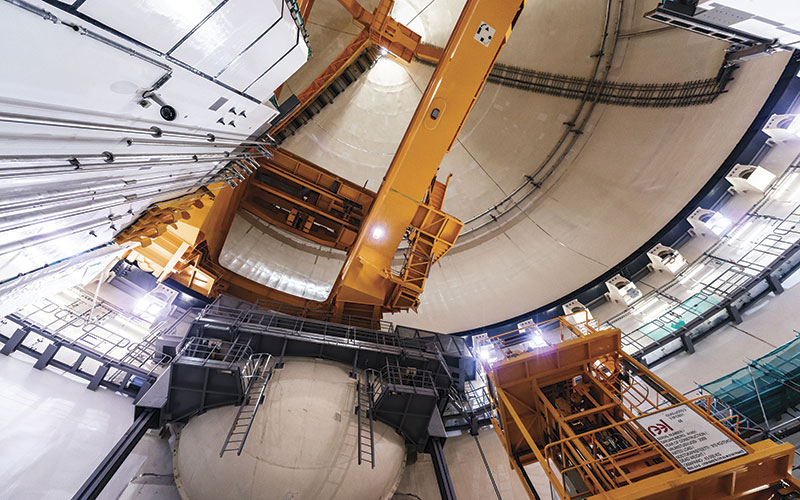Making nuclear new build an investment vehicle
Vincent Zabielski at Pillsbury Winthrop Shaw Pittman explains how to make nuclear new build a viable institutional investment

While other countries in Western Europe such as Germany, Switzerland and France have decided, to varying degrees, to move away from nuclear power in favour of renewables, the UK has embraced nuclear power as an important facet of its future energy mix. The government has announced a comprehensive nuclear sector deal that should ensure nuclear continues to play a major role in meeting the UK’s future energy needs. The UK’s approach seems particularly enlightened in the wake of the UN’s recent warning that we have only 12 years to avert irrevocable climate damage due to global warming.
However, despite the support of the government, investors do not currently see UK nuclear new build as an attractive investment opportunity. There have been several rather spectacular nuclear project failures during the past couple of decades, resulting in bankruptcies, unit cancellations, construction schedules that are completed decades late, and billions in cost overruns. However, a few projects have been relatively successful. There are lessons to be learned in failure as well as success. In addition to government support, an ‘investable’ nuclear project needs three key factors:
Step one: get references
The first and most important factor affecting whether a project is investable is using a completed design, supplied by a vendor with a successful recent track record of building nuclear power plants of a similar design. A ‘reference plant’ should be used to fully define the scope of delivery. Many recent nuclear new build projects have been hampered by a ‘design-as-you-go’ approach with advanced, and sometimes unbuildable, features. From an ‘investability’ standpoint, it is always best to let someone else deal with the pains of developing a first-of-its-kind new reactor design.
Before they are willing to put their cash into a project, investors want to know that the power plant design has been properly sorted, and that it can be built on-time and on-budget.
Step two: allocate risk fairly
When putting together the contract for delivery, ensure there is a reasonable and proper allocation of risk between the project developer and the contractor building the units. A common school of thought is that the best way to procure a nuclear power plant is
to push all the risk onto the contractor that is building the plant. Recent history has proven this approach wrong – it makes the contractor responsible for risks that they cannot control. At best, this increases the cost of the project and invites contentious litigation. At worst, this approach bankrupts the contractor.
Step three: split owner and operator entities
One way to make a nuclear project more attractive to investors is to isolate the investment from any potential nuclear liability
A third way to make a nuclear project more attractive to investors is to isolate the investment from any potential nuclear liability. Under the nuclear liability regimes in Europe and the UK, nuclear liability is channelled to the operator of the nuclear facility, and that operator is typically the owner of the facility, too.
However, in some jurisdictions, such as the UAE and the US, it is possible to have non-operating owners. Under this approach, the business structure is split into two entities: a legal entity that serves as the ‘owner’, which is the borrower and the equity investment vehicle, and a separate legal entity that is the ‘operator’, which is responsible for safe operation of the reactors. Under this structure, the owner is party to the power purchase agreement, and is also the borrower of funds and the vehicle for direct investment in the project.
The two entities are tied together by an agreement whereby the operator pledges the electrical output from the nuclear plant in exchange for a promise to pay the operator’s costs of running the nuclear plant. The debt used to build the power plant is secured by the future stream of revenue from the sale of electricity produced. In this structure, the operator is insured up to the legal liability limit, and bears responsibility for any nuclear damage resulting from the units.
Naturally, the Office for Nuclear Regulation would have a lot to say about the specific structure and who may own shares in such a scheme, but there is conceptually nothing to prevent the implementation of such a model. Using this approach, government equity investment in the project could be temporary, with the government serving as a ‘cornerstone’ investor during construction, and then selling its shares upon achievement of commercial operation. This approach would also allow for passive investment by pension funds, for example, or any other investors seeking a stable, long-term return over the 60-year life of the plant.
The UK appears to be on the right path for successful deployment of a new generation of nuclear plants. The key to attracting investment will be to think through the entire project life cycle from the beginning to the end – with an eye towards eliminating project risk.
By Vincent Zabielski, Senior Lawyer – Energy, Pillsbury Winthrop Shaw Pittman
Image credit | Getty






Follow us
Advertise
Free e-Newsletter